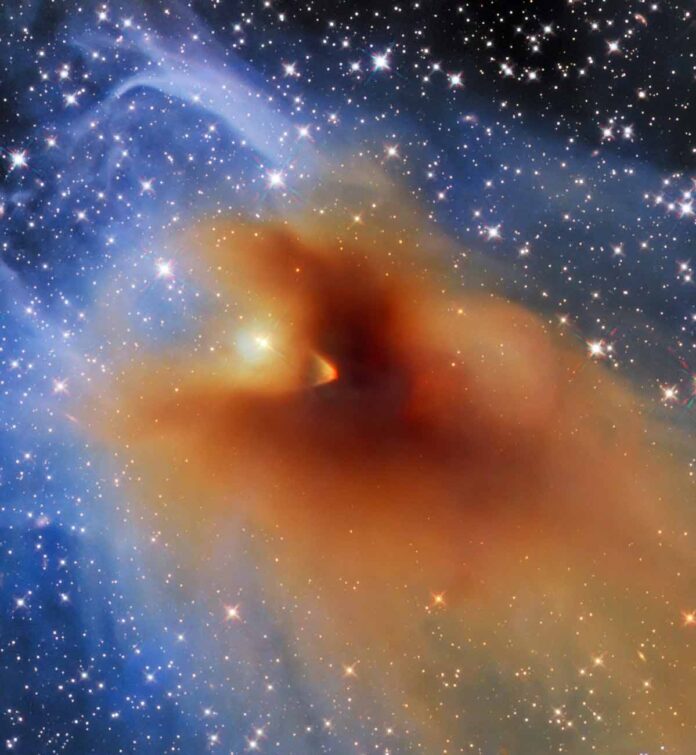The birth of a star begins in a shroud of gas and dust. Because there is still so much to learn about these stellar crêches, the Hubble Space Telescope (HST) excels at providing detailed views of them. Its most recent image depicts an object known as a “dense core,” which could be the location of a stellar embryo.
We can see the outside of the crêche from HST—a region known as CB130-3. This dense core lives up to its name; it’s so dense that we can’t see into it. However, it provides us with an insight into the complexities of star-making machinery.
This cloud of gas and dust, as well as its hidden stellar embryo, are located in the direction of the constellation Serpens. It’s located in the Aquila Rift region, about 650 light-years away from us. Astronomers interested in understanding all aspects of star birth are drawn to this site and other locations in the galaxy where nebulae are forming stars. It has previously been observed at radio and infrared wavelengths, as well as optically.
Baby Stars are formed by dense cores
So, what happens during star formation, and how important is the dense core? Star birth is a lengthy process, and these cores are only one part of it. The first section begins long before cores appear on the scene. First, we’ll need a “nebula,” which is a cloud of gas and dust. Then it requires some external influences. Perhaps a passing star agitates the nebula. Alternatively, a nearby supermassive star explodes in a supernova explosion. Both processes generate shock waves in the cloud. Whatever the cause, the shocks break up the cloud into smaller clumps and push on them to form the dense cores.
Material swirls around and falls into the centre of a dense core. It’s essentially a concentration of gas and dust. Pressures and temperatures rise as a result. A protostar forms when enough material gathers. Depending on the mass of the material, this could take a thousand years or more. For the next several hundred thousand years, the protostar will continue to absorb more gas and dust.
The entire protostar phase can last a half-billion years or so (depending on the mass of the eventual star). The temperatures and pressures eventually rise to the point where the protostar’s core ignites nuclear fusion. Again, depending on the final mass of the newborn star, this could take up to ten million years. However, the moment nuclear fusion begins, the star is born. What began as a “seed” within a dense core of gas and dust has grown into a fully formed star.
Hubble’s View of the Gas and Dust Cloud CB130-3 is one of many dense cores studied by astronomers to learn more about star formation. Despite being hidden by the thick birth cloud, this dense core already contains an embryonic star. That hot young object will erupt as a newborn star like the Sun in no time (in cosmic time).
Chemical properties of objects like this one are intriguing. They are referred to as a “carbon-chain-rich” dense core. Its molecules are particularly useful for tracing the chemistry of dense clouds of gas and dust where stars form. They are important tracers of reactive organic materials in star-forming regions, according to astronomers. They are also used to track chemical elements in protoplanetary discs, particularly complex organics that may influence the formation of life.
Astronomers used the HST’s Wide Field Camera 3 to examine the cloud surrounding the dense core of CB130-3. Its thickness varies, ranging from a diaphanous veil on the object’s outskirts to an almost impervious shroud of gas and dust in the centre. As it passes through the cloud, light from the stars in the background appears reddened. This colour shift aids astronomers in understanding the density of various parts of the cloud that will spawn new stars in the galaxy.

